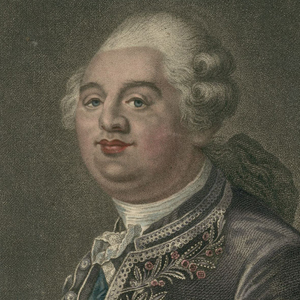Popular Culture

Source Collection: Monarchy Embattled
Reality never matched the popular image of the all-powerful French King. Even Louis XIV, exalted by his own propagandists and many historians as the Sun King, never actually enjoyed that kind of authority. Theories of divine right, which linked the King to God, proved untenable for many.

Louis XVI distributes aid to the Poor
Here Louis XVI is portrayed as a benevolent king distributing alms to the poor, an appropriate action for the "Father of his people." However, his rich fur–clad outfit contrasts with the abject poverty of the common people, suggesting to those inclined to be critical that the King did not underst

Louis the Sixteenth, King of France and of Navarre
This portrait demonstrates Louis at the height of his power and authority on the eve of the French Revolution.
Proclamation of the Department of the Seine–et–Oise (9 March 1792)
Despite the radical measures taken by the National Assembly, such as the abolition of nobility and the Civil Constitution of the Clergy, social conflicts continued to manifest themselves after the National Assembly completed its work in 1791.
Letter from Rabaut de Saint–Étienne to the Minister of the Interior (27 February 1791)
In this document, Jean–Paul Rabaut de Saint–Étienne, a Protestant pastor from Nîmes who had been a deputy to the National Assembly and who would later be elected to the National Convention, warns the central government of the ongoing violence in the Midi and the role of refractory priests and rel

Monks Learning to Exercise.
This image ridicules monks for contributing nothing to society, either economically or demographically, by depicting a group of them being taken from the monastery and drafted into the army, where they hope "to become good citizens" as was expected under religious restructuring during the French
Attack on Seigneurial Dues
The petitions from rural communities focused in part on the abuse of seigneurial dues owed by peasants to lords for which, in principle, they received protection and supervision.
Babeuf’s Trial
Long after sans–culotte influence on the government had waned, social conflicts continued to drive some revolutionary events.

Inside a Revolutionary Committee during the Reign of Terror
The extremely respectful view of sans–culotte militancy is evident in this image, engraved by the French Revolutionary sculptor Berthault and based on a painting by Fragonard, the son of the famous old regime painter.
Manifesto of the Enragés
Jacques Roux, a former priest turned radical French revolutionary, became the leading voice for a group known as the "Enraged," because they expressed constant anger at the unfairness shown toward the ordinary, poor people who made up the bulk of the patriotic citizenry and whose plight Roux dema